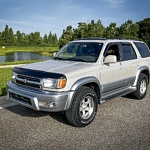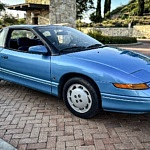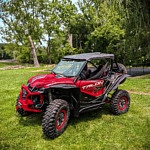Many motorists know that switching to winter tires this time of the year is a smart move. But there’s another critical safety upgrade for cold-weather driving: winter wiper blades.
A set of winter wiper blades improves visibility—making driving much safer in snow, slush, and freezing rain.
Wiper Blade Materials
Silicone wiper blades (Photos courtesy of Pylon)
Most of us don’t pay much attention to our car’s wiper blades until they no longer sweep the water away. Or until their squeaks and rattles get on our nerves.
These days, you can still find rubber wiper blades for sale. However, many blades now use silicone.
Silicone helps push the rain off the glass, leaving behind a water-repellent layer. At the same, silicone wiper blades are more durable. They often last about four times longer than rubber-based winter wiper blades.
There are three types of wiper-blade construction.
Conventional
In the conventional design, the wiper slides into two sets of holders (or claws) that push or spring the wiper against the windshield. With only those four or so contact points, there is not always solid contact across the entire blade.
Beam-Blade Design
If you encounter a significant amount of snow and ice, your car should be using an all-weather beam blade. It provides the best coverage and visibility.
The beam-blade wiper was created when manufacturers started using curved glass windshields. Because conventional wipers push against the glass in only a few spots, they can fail to wipe the glass free of all the rain or snow.
On the other hand, beam wipers use a small piece of metal as part of the frameless design to ensure the wiper pushes against the blade’s full width.
Hybrid Blades
Hybrid wipers retain the general design of a conventional, spring-loaded blade. But they add an element to assist in keeping the wiper blade pushed against the glass. Hybrid blades are aerodynamic and offer a rigid plastic cover to protect against the winter’s harshest elements.
Why Bother With Winter Wiper Blades?
Depending on the age of your wipers, your existing blades are probably doing a decent job of clearing rain from the windshield. But cold-weather conditions add a whole new dimension to the task.
Winter wiper blades provide more assistance for these factors:
- Snow, slush, and ice that can rapidly accumulate during a winter storm
- Frozen water, which is heavier and tends to stick to the windshield
- Metal connectors that can get clogged by ice or frozen stiff
A Winter Blade Is Good for All Weather
Mike Fretwell, chief marketing officer at Pylon, a leading manufacturer of wiper blades, says:
A beam blade reduces the wiper’s exposure to the elements. It protects the wiper blade from snow and debris buildup. Beam wiper blades are typically designed for all-weather performance.
A winter blade is often referred to as an all-weather blade. Drivers don’t need to swap them out at the end of the winter season. Fretwell says some of its blades have been tested to “two-million wipes, which can vary by person but should last 12 to 18 months.” When did you last change your wiper blades?
eBay Motors offers a wide selection of winter wiper blades. When replacing or upgrading your wiper blades, check all the wipers on your vehicle—both front and back. Drivers should place equal importance on the view out of the rear of their SUV or hatchback. It’s just as critical as the front view.
AAA also answers this question: Should you leave your windshield wipers up in the snow?




